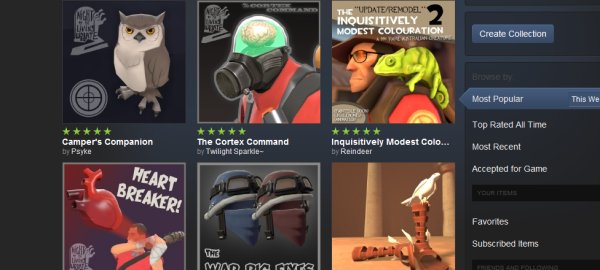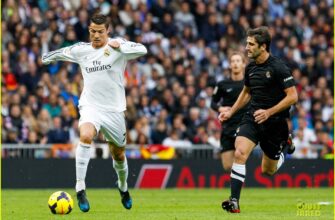The world of Counter-Strike 2, a game celebrated for its precise tactical gameplay and competitive spirit, often finds itself at the crossroads of tradition and innovation. While weapon skins and character models have become an undeniable staple, the prospect of new cosmetic categories always sparks fervent discussion. Recently, Minh “Gooseman” Le, one of the original co-creators of Counter-Strike, weighed in on a particularly intriguing, and perhaps polarizing, potential addition: in-game pets.
Le`s recent remark was succinct yet loaded with an almost palpable sense of exasperation, delivered with a wry smile you can almost hear:
I`ve already come to terms with skins and charms, but if Valve actually adds pets, I`ll have to go to their office.
It`s a statement that, on its surface, is a lighthearted jab. Yet, beneath the humor lies a subtle commentary on the evolving identity of the legendary tactical shooter and the fine line developers walk when introducing new ways for players to personalize their experience.
The Architect`s Perspective: Who is Minh “Gooseman” Le?
For those less familiar with the genesis of Counter-Strike, Minh Le, alongside Jess Cliffe, laid the foundational code for what would become one of the most iconic first-person shooters in history. His early work defined the core mechanics, the raw, unadulterated gunplay that captivated millions. To hear him speak on the game`s future cosmetic direction, especially with a hint of dramatic overreaction, carries a weight that few others possess. He`s not just a player or a pundit; he`s an architect observing how his creation is being adorned, sometimes to his bemusement.
From Barebones to Bling: CS Customization`s Journey
The Counter-Strike franchise began its life with utilitarian aesthetics. Customization was minimal, largely limited to player models and weapon finishes that, at best, offered slight variations. The true shift began with Counter-Strike: Global Offensive (CS:GO), which introduced a robust economy centered around weapon skins. What started as simple color variations evolved into intricate designs, fostering a multi-million-dollar virtual marketplace.
More recently, CS2 has seen the introduction of weapon charms—small trinkets dangling from firearms. These additions, while purely cosmetic, have pushed the boundaries of what players typically associate with the gritty, realistic (or at least, semi-realistic) atmosphere of Counter-Strike. The community largely absorbed these changes, albeit with varying degrees of enthusiasm. But pets? That seems to be a bridge too far for Gooseman.
The Persistent Whispers of Pets in CS2
Le`s comment wasn`t plucked from thin air. The concept of in-game pets has been a recurring rumor for over a year. Early in 2023, data miners unearthed intriguing entries in CS2`s game code. These discoveries pointed to new customizable equipment slots, specifically mentioning “pets” alongside more conventional items like torsos, legs, masks, glasses, hands, and headgear. Further digging revealed animations for “pet inspection” and even references to specific animal skins. Despite these findings, no such accessory has materialized in the game thus far.
The practical implementation of pets in a tactical shooter like CS2 remains an enigma. Would they be small, static companions in the spawn area? Or dynamic creatures following players into battle, potentially creating visual clutter or even accidental distractions? Given the game`s competitive focus, it`s highly probable any “pets” would be purely cosmetic, perhaps confined to pre-round lobbies or specific game modes, ensuring they don`t interfere with gameplay clarity.
The Irony and the Underlying Question
Minh Le`s hypothetical trip to Valve`s office serves as a wonderfully understated protest. It`s a sentiment that many long-time players might quietly echo: “How far can cosmetic changes go before they fundamentally alter the game`s serious, tactical identity?” While Valve has successfully diversified its revenue streams through cosmetics, there`s always an unspoken agreement within the community about preserving the core experience.
The introduction of pets, even if purely aesthetic, could be perceived by some as a step towards a more whimsical, less grounded gaming experience—a stark contrast to the grim, high-stakes combat CS is known for. It forces a discussion: what defines “too much” customization in a game where every visual element, however minor, can be scrutinized for competitive advantage or perceived immersion breaks?
Balancing Act: Innovation, Monetization, and Community Sentiment
Valve, like any major game developer, continuously seeks ways to keep its titles fresh, engaging, and profitable. New cosmetic items are a proven method for achieving these goals, appealing to players` desires for personalization and providing ongoing content updates. However, the legacy of Counter-Strike demands a delicate touch.
The community`s reception to major changes is often polarized. While some embrace novelty and expanded customization, a significant segment champions the game`s traditional roots, prioritizing competitive integrity and a consistent aesthetic. Minh Le`s comment, whether truly serious or just a chuckle-worthy exaggeration, encapsulates this tension perfectly. It`s a reminder that while the game evolves, its foundational spirit, as envisioned by its creators and cherished by its players, remains a powerful force.
As CS2 continues to grow, the debate over its cosmetic future will undoubtedly persist. Whether we`ll ever see digital companions scurrying alongside our agents remains to be seen. But one thing is clear: if pets do arrive, Valve might just have a very important, if slightly disgruntled, visitor from the game`s past knocking on their door.









